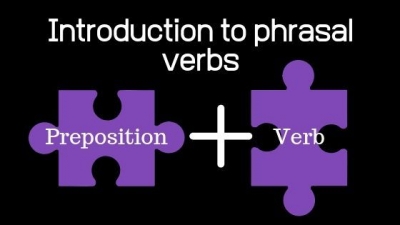
Many verbs in English are followed by an adverb or a preposition (also called a particle) to form phrases. Have you come across the phrase “give in”?
These two-part verbs, also called phrasal verbs, are different from the verbs and their helpers (am going) we use to show tenses. The particle and the verb together (the phrasal verb) have a meaning that is often different from the meaning of the verb alone. T he meaning is often idiomatic.
Example: “put” means to place. But add “off” to “put” and what do you get? Phrasal verb “put off” means “to postpone”. You must have a good understanding of phrasal verbs to follow most of the writing you come across.
A phrasal verb is a compound word. A preposition (on, in, at) or an adverb (up, down) is added to a verb to form a phrasal verb. The addition of a particle produces a verb phrase with a new meaning.
Example: carry on – continue – carry out – fulfil, implement.
Sometimes, a verb may take two particles, both the preposition and the adverb. Example: We have run out of ideas.
Phrasal verbs may also be split – a pronoun may find a place between the verb and the particle.
Example: Lock it up, look them up the same as the verb of the phrasal verb may be the same as the verb or it may be completely different.
Examples: He gave out the answers. (announced)
He gave in to their demands. (accepted, surrendered)
Picture Credit : Google




